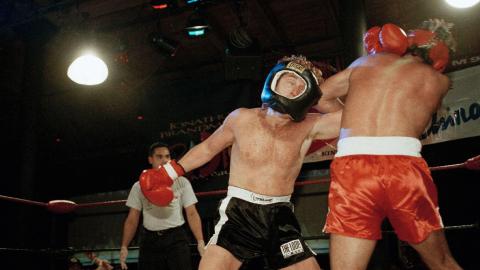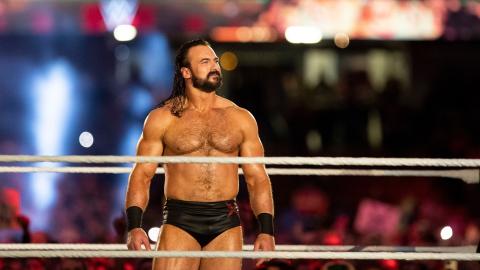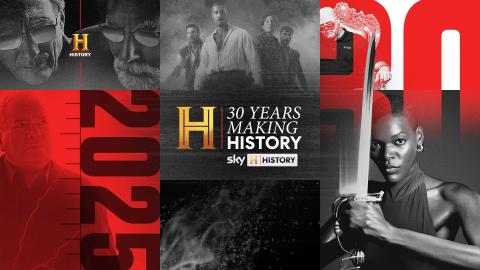Why Did Batman and Superman Go Mainstream?
One’s the Dark Knight Detective, the other’s the Big Blue Boy Scout. While Batman and Superman couldn’t be more different, one thing they have in common is their iconic status in pop culture. Both Gotham’s moody guardian and the noble alien from Krypton have transcended the world of comics to become contemporary myths: the modern equivalents of Gilgamesh, Achilles and Beowulf. But why? Why have Batman and Superman achieved such universal, mainstream fame, and not, say, the Red Bee?
In case that name doesn’t ring any bells, the Red Bee was – like the Man of Steel and the Caped Crusader – a product of the Golden Age of comics, first appearing in 1940. A lawyer-turned-hero, he brandished a “stinger gun” and had a bee called Michael who lived in his belt. He was exactly as absurd as he sounds, so it’s perhaps unsurprising the Red Bee didn’t cause much of a buzz.
Do Batman and Superman really have a special, intrinsic “something” that set them on the path to mainstream success?
But, even if we discount the likes of Red Bee, and other superheroes too obviously ridiculous to stand the test of time (see “Arm Fall Off Boy”, a DC character with the astounding ability to detach his own limbs and use them as weapons), what about the ordinary, rank-and-file heroes who’ve quietly eked out comic book careers without ever becoming household names? Like DC’s Hawk and Dove, or Marvel’s Moon Knight, for example. Do Batman and Superman really have a special, intrinsic “something” that set them on the path to mainstream success?
One major argument is that these two characters perfectly embody certain permanent archetypes. Superman is “truth, justice and the American way”, a living symbol of sunny utopian optimism, while Batman is the shadow of that ideal: the dark and violent id of modern urban civilisation. It’s even been said that Superman’s Metropolis and Batman’s Gotham City are flip-sides of the same place: day and night versions of New York City.
Then there’s the sheer resonance of the supporting characters. Batman inarguably boasts the most compellingly crazed and tragic pantheon of villains in comics history, while Superman gave us the quintessential megalomaniac baddie in the form of Lex Luthor, as well as the most appealing of all superhero romances in the bumpy dynamic between Clark Kent and Lois Lane.
But the strength of their symbolism, and the powerfully drawn characters, isn’t quite enough to explain why everyone – even people who couldn’t tell you Iron Man’s real name, and wouldn’t know their Doctor Doom from their Doctor Octopus – can readily reel off the basic facts about Batman and Superman. Don’t point to comic sales either – it’s easy to forget that the biggest superhero of the 1940s wasn’t Batman OR Superman, but a big muscle-bound chap called Captain Marvel. (Whose alter-ego was a young boy. Yes, exactly like Bananaman.)
The real answer surely lies in timing, and the early penetration of the mass media. While the likes of Zorro, The Shadow and even the Scarlet Pimpernel can all be considered proto-superheroes, it was Superman, created by Jerry Siegel and Joe Shuster in the late 1930s, who set the template for costumed heroes as we understand them today. This innovative concept in heroism was an instant sensation with young readers, paving the way for a hit radio series and then his first feature film, Superman and the Mole Men, which made a household name of actor George Reeves.
Batman also had an early start. Created by Bob Kane and Bill Finger, he first appeared in the now-legendary (and eye-wateringly valuable) Detective Comics #27 in 1939. The live-action adaptations of the 1940s made Batman known to millions of people who’d never so much as looked at a panel of a comic. And, when sales of Batman comics eventually flagged, they were given a huge boost by the flamboyantly campy 1960s series with Adam West, which permanently embedded not just Batman and Robin, but the whole rogues’ gallery of villains from the Joker to Mr Freeze, in the public consciousness.
It’s also significant that the Man of Steel and the Caped Crusader were the subjects of the two movies now regarded as the classic forerunners to today’s ubiquitous superhero blockbusters. In 1978, an unknown actor called Christopher Reeve became an instant cinematic icon as Superman, while just over a decade later, Tim Burton’s Batman became an all-conquering merchandising juggernaut, with the Bat symbol seemingly emblazoned on every available t-shirt or baseball cap across the world.
Released in an era when superhero films were few and far between, these massive Hollywood hits expanded still further on the mainstream penetration of the George Reeves and Adam West versions of Superman and Batman, cementing them in the minds of one and all. Poor old Red Bee never stood a chance.















